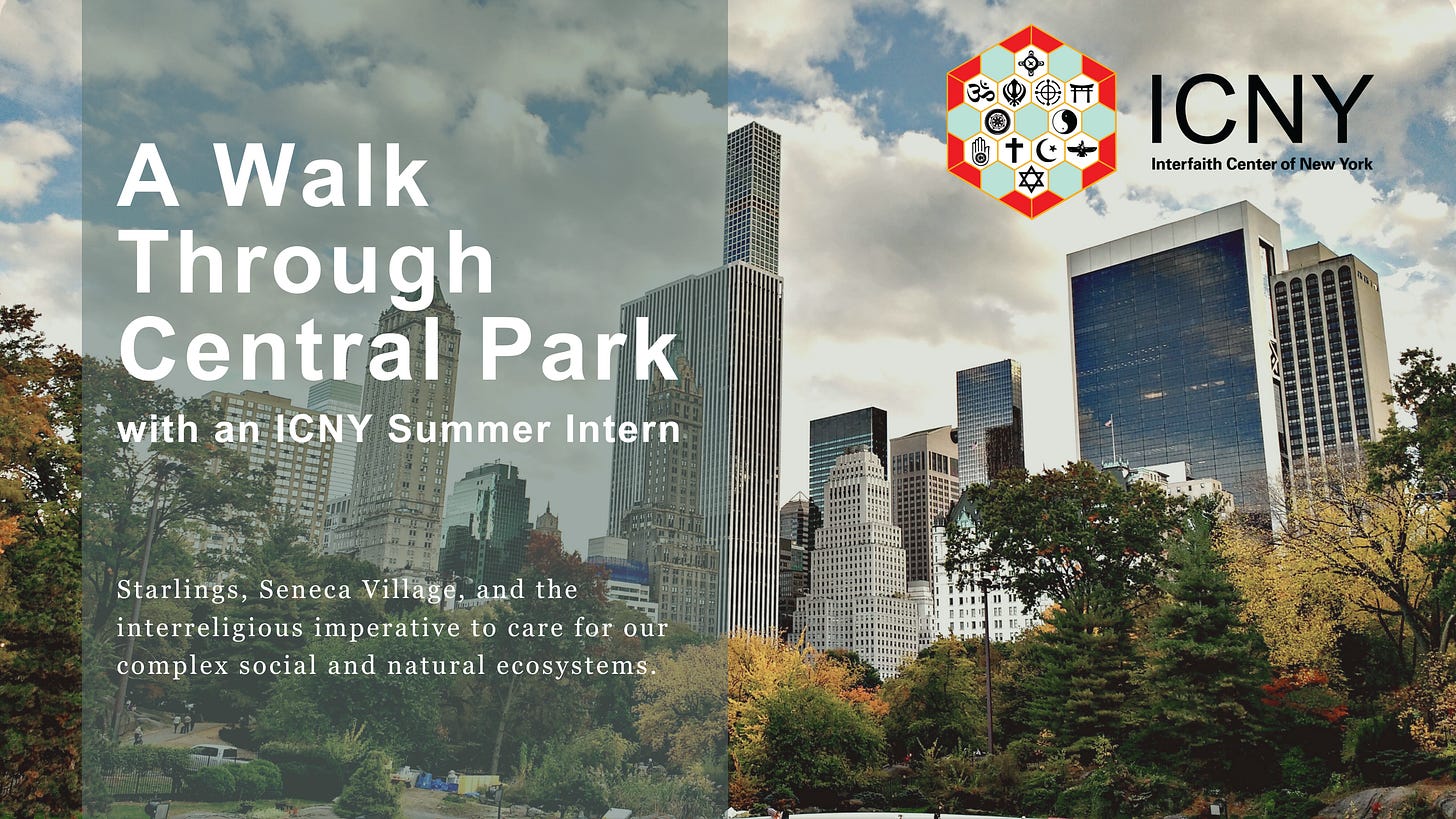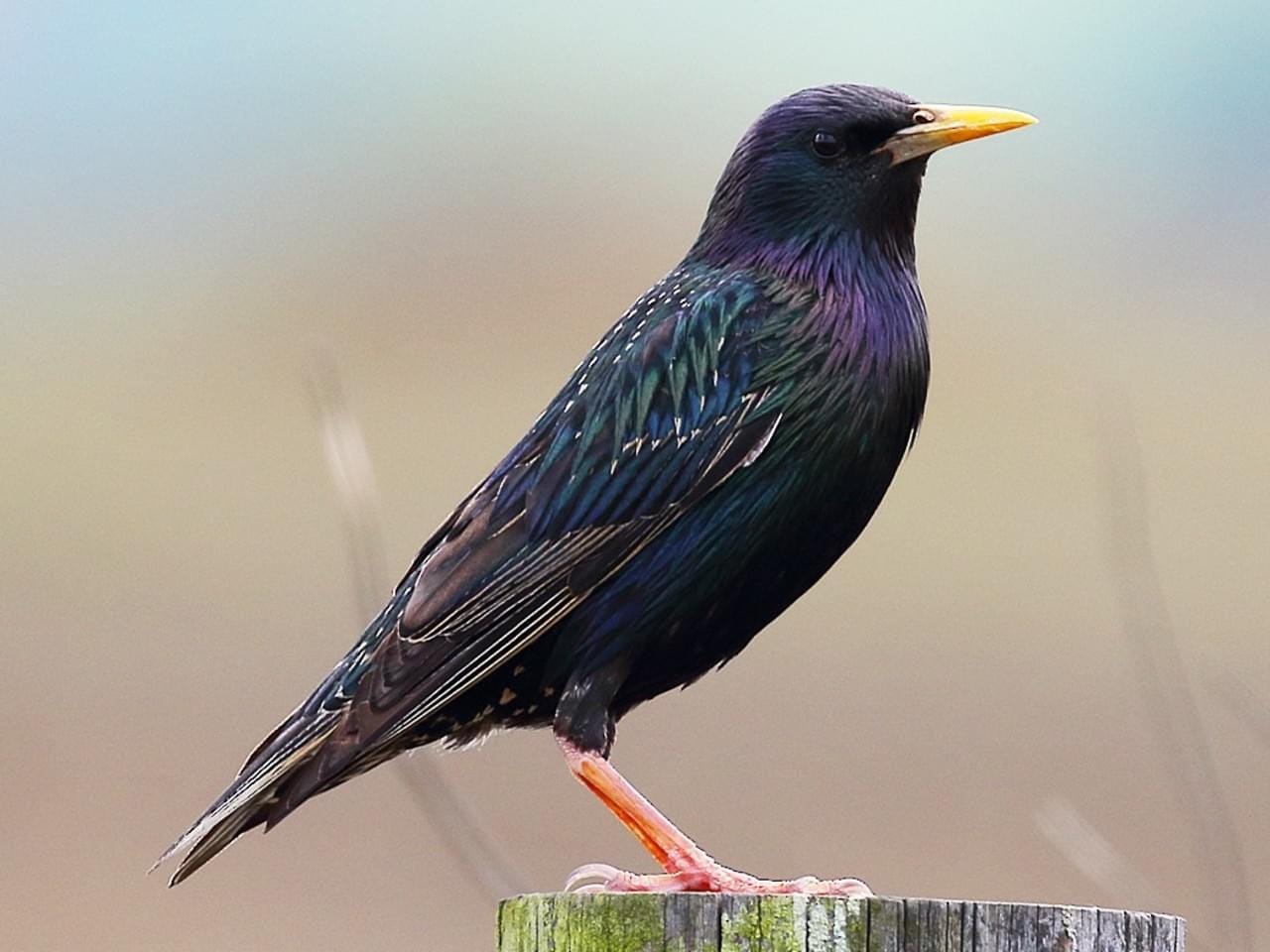A Walk Through Central Park with an ICNY Intern
ICNY's summer intern Courtney shares reflections on the history of Central Park and its connection to ICNY's work today. Courtney is joining ICNY from Harvard's Religion and Public Life program.
What struck me most as I explored New York for the first time is not only how complex its history is, but also how concentrated. As one of the oldest and most densely-populated cities in the country, New York stands on layers upon layers of its past selves. Most of the places I’ve lived have been one of two types: either desperate to forget the past, or desperate to stay in it. I felt something entirely different here. I passed churches that were once synagogues, synagogues that were once churches, a furniture store that curiously advertised a “sushi buffet inside”– none either willing or able to erase the stories that came before. Entire worlds are chronicled between the bricks, if you take time to read them.
I was also surprised to learn how far this phenomenon extends beyond the buildings. After my first visit, my dear friend Rachel– a lifelong Manhattanite and treasury of New York history– told me the story of Central Park. Today, one can hardly see the layers of history buried under the landscapes of the country’s largest urban park. It would be easy to think that this sweeping sliver of the natural world had been set aside during industrialization and spared from the fate of its surroundings; that these plant species were known and stewarded by the first people here, the Lenape; that the birds overhead had evolved in delicate harmony with their surroundings.
In reality, Central Park bears more resemblance to the buildings of New York City than to its pre-colonial past. Far from a nature reserve, Central Park was once home to Seneca Village, a community mostly of formerly enslaved Black landowners. The Village began through the efforts of the newly-established AME Zion Church– now home to more than 1.4 million adherents worldwide– and the New York African Society for Mutual Relief. In particular, investments by Epiphany Davis, Andrew Williams, and William Matthews were instrumental in securing land to promote economic sovereignty and self-determination for the Black community. Irish and German immigrants later joined them, also facing ethnic discrimination in their new home.
An early landscaping plan for Central Park, with the former location of Seneca Village highlighted; courtesy of the New York Public Library Digital Collections.
At the same time, the rest of the city was exploding in population. Wealthy New Yorkers, weary of their industrialized lifestyles, sought to increase public lands for recreation. After more than thirty years of development, the land that Seneca Villagers refused to sell was seized through eminent domain, its residents were violently displaced, and its homes, businesses, and churches were demolished to make way for what would become Central Park. As an 1860s New-York Daily Times article recounted, “the supremacy of law was upheld by the policemen's bludgeons, and with many broken heads and ensanguined eyes.”
Once the land had been cleared for redevelopment, hundreds of plant species were imported from Europe to resemble the park’s inspiration, England’s Birkenhead Park. The colonial desire to recreate European landscapes in New York had many consequences, chief among them being the introduction of the European starling. As the oft-repeated, though mostly fictitious, story goes, Eugene Shieffelin was inspired by the avian references in Shakespeare’s works to import scores of bird species from England. While the Shakespearean connection is dubious, Schieffelin was indeed part of the American Acclimatization Society, an arm of the European-born project to export the natural landscapes of Northwestern Europe in order to gain economic, cultural, and political influence around the world.
Central Park today, reminiscent of late modern European landscaping.
Though most species died in the unfamiliar American terrain, the sixty starlings first released by Shieffelin in Central Park on March 6, 1890 learned to adapt to their new surroundings. In fact, they did not just adapt– they conquered. Their population grew exponentially, outcompeting native birds for resources that were already limited, given that the flora in the park was chosen for aesthetics, rather than functionality. Today, the starling is considered one of the most destructive invasive species in North America, having driven multiple native species to extinction and causing an estimated $800 million worth of agricultural damage per year in the US.
A common starling; courtesy of the National Parks Service digital gallery.
It is a remarkable display of power to curate the natural world for pleasure. The colonial impulse to dictate where nature, and people, can and cannot be has consequences that ripple outward in unpredictable ways. Particularly in a city like New York, dense plurality contributes to delicate social and natural ecosystems, and seemingly small decisions can impact the most vulnerable members of the community. While housing rights and habitat preservation may seem unrelated at first glance, the connection between human exploitation and the waste and destruction of the natural world stems from the same belief that other living beings exist for our personal gain.
As people of faith, we must prioritize the wellbeing of the most vulnerable members of our communities, creating healthy ecosystems for all to thrive. For our work at the ICNY, this takes many forms. In particular, one recent focus has been supporting migrants and asylum seekers, who have been disproportionately affected by the already-devastating housing crisis. In migrant shelters, public school classrooms, and houses of worship, each part of our religiously diverse community has a part to play in this project of collective care, working to dismantle the systems of power that dictate where people– and which people– do and do not have the right to exist.
Curious to learn more and support ICNY’s work? Explore our website to see how you can contribute to our upcoming initiatives.






